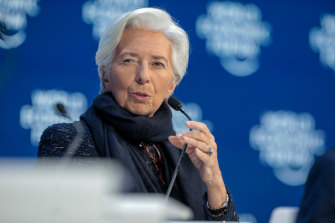
If they follow other nations in picking important historical figures, they could choose heroes of the development of the European Union, while campaigners have suggested a more varied cast to better reflect the modern world.
Professor Patrick Vernon, social commentator and a leader of the campaign group Banknotes of Colour, said the ECB should make the most of the opportunity to highlight the continent’s diversity through images on its currency.

“After 20 years, it’s time to review the look of our banknotes to make them more relatable to Europeans of all ages and backgrounds.“: European Central Bank president Christine Lagarde.Credit:Bloomberg
“There is still low visibility of black and minority ethnic representation in public life in Europe. I know we contend that in the UK there are not enough black and Asian MPs or people running corporates in the UK, but I think it is actually even worse in Europe,” he said.
“It would be a powerful beacon of the ECB which might influence partner agencies and countries to do more work on diversity and representation.”
He added that the Frankfurt-based institution should follow the lead of the Bank of England and the German Government with a review into the history of the continent’s monetary authorities.
In Germany’s case this has included apologising for a genocide in Namibia, while the Bank of England has removed paintings of Governors linked to slavery.
Loading
Even as the day to day use of cash has declined, the number of banknotes in circulation has grown to a record high of more than 27.6 billion. These have a total value of more than €1.5 trillion.
The €50 note is the most common, with 13.4 billion in circulation, followed by the €20, of which there are 4.5 billion available. There are 2 billion of each the €100, €10 and €5 notes in circulation.
The €200 and €500 are less common, with less than 1 billion of each in use.
Central banks stopped issuing the €500 note in 2019, following concerns that its vast value made it the instrument of choice for criminals seeking to move large amounts of cash in as little physical volume as possible.
Telegraph, London
The Market Recap newsletter is a wrap of the day’s trading. Get it each weekday afternoon.









 Add Category
Add Category